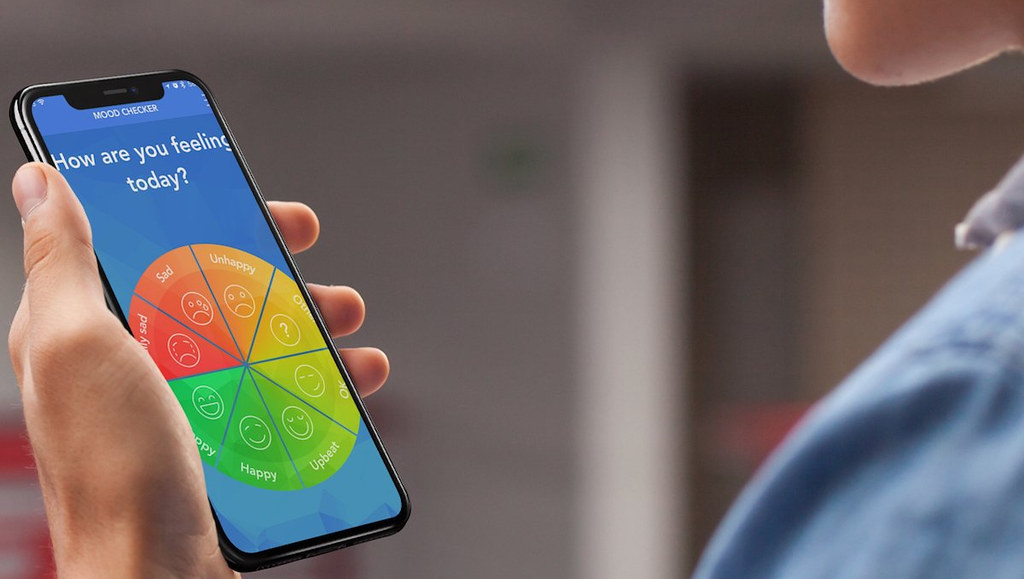Beating Adolescent Self-Harm (BASH)
Creating a smartphone self-harm prevention app (BlueIce) for young adolescents aged 12 to 17 years who self-harm.

Self-harm, intentional self-poisoning or self-injury - irrespective of motivation - is common during adolescence, with up to one in six reporting at least one episode in the past year. Approximately half of adolescents who self-harm will do so more than once, with cutting and overdose the main methods used. Self-harm is associated with a range of mental health disorders and increased risk of suicide.
NICE and the Cochrane review have noted a lack of evidence for the treatment of self-harm in young people. There is currently little evidence to draw conclusions on the effects of interventions for self-harm in adolescents. The Cochrane review recommends developing and evaluating new interventions collaboratively with young people.
We are working on this project with the University of Exeter and Oxford Health NHS Foundation Trust.
BlueIce: a smartphone app for young people who self-harm
Designing the app
We worked with young people to co-design a smartphone app, BlueIce, to help young people manage urges to self-harm. The idea arose from the Chief Investigators clinical work, where it emerged that nearly all young people who were self-harming had access to their smartphone at the time of self-harm. This theme was explored and developed through a series of workshops.
Young people with a lived experience of self-harm discussed
the concept, and if an app would be helpful?
what it should look like - examples of apps liked and used
design, including font, colours and flow
content, including evidence based and ideas young people found helpful.
What the app includes
BlueIce includes a mood diary, menu of personalised mood lifting activities and automatic routing through safety checks to delay or prevent self-harm. It provides a personalised toolbox of mood lifting strategies based on cognitive behavioural therapy (CBT) and dialectical behaviour therapy (DBT).
The app includes:
activities designed to improve mood
a personalised music library of uplifting music
photo library of positive memories
physical activities
mood changing activities
relaxation and mindfulness exercises
identification and challenging of negative thoughts
a contact list of key people to call or text
distress tolerance activities.
After using the mood lifting section young people re-rate their mood and if their urge to self-harm has not reduced they are automatically routed to emergency numbers (Childline, 111) they can call.
12 week review
At the end of the 12-week study qualitative interviews highlighted that BlueIce was very well received.
We evaluated the safety and acceptability of BlueIce with 44 young people aged 12-17 attending specialist CAMHS. We identified no safety issues and app acceptability was very good.
After familiarisation, 92% of young people wanted to use BlueIce.
After 12 weeks of use, we found that:
88% of users wanting to keep it
symptoms of anxiety and depression significantly reduced
73% of young people reporting that they had stopped or reduced their self-harming
BlueIce prevented 308 incidents of potential self-harm.
Award winning
The first phase of this project was the Winner of the Innovation in Digital Health Award at the 2019 National Positive Practice in Mental Health Awards.
Current study
We will conduct a single blind randomised controlled trial, comparing usual face to face mental health care (UC) and usual face to face mental health care, plus BlueIce. We will recruit 172 young people aged 12 to 17 years who attend specialist Child and Adolescent Mental Health Services (CAMHS) with a history of self-harm.
We’ll then undertake assessments at:
Baseline
Post intervention (12 weeks)
Follow up (six months)
The primary outcome being a self-report of self-harm assessed by the Risk-Taking and Self-Harm Inventory for Adolescents. Secondary outcomes assessed will include depression, anxiety, hopelessness, sleep and general behaviour. We will also use the Child Health Utility 9D and resource-use questionnaire to analyse the economic feasibility, and use semi-structured interviews to assess acceptability.
Expected Outputs
BlueIce has already met the NHS safety and security requirements and is available as a prescribed app for use by other NHS Trusts via the NHS app library. If proven effective in this study, it can immediately be implemented in CAMHS at negligible cost to improve the mental health of young people and to offer cost savings arising from reduced emergency care following incidents of self-harm.
Research team
Chief Investigator
Prof Paul Stallard Professor of Child and Family Mental Health, Department for Health, University of Bath
Co-Investigators
Dr Gordon Taylor, University of Exeter
Dr Shelley Rhodes, University of Exeter
Prof Antonieta Medina-Lara, University of Exeter
Gill Welsh, Oxford Health NHS Foundation Trust
